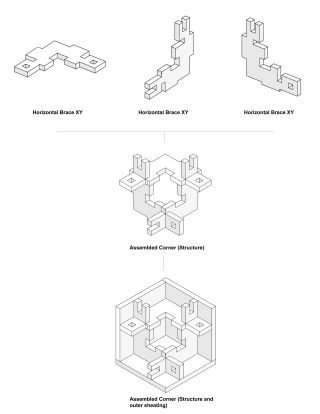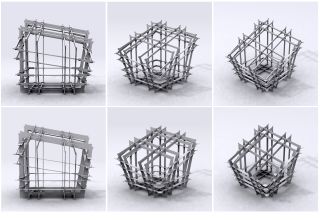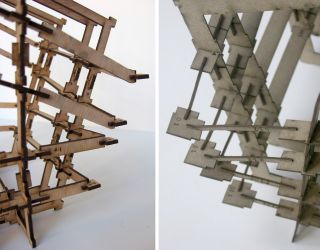3(4) 2008
 |
|
 |
ARCHITECTURE AND MODERN INFORMATION TECHNOLOGIES
ÌÅÆÄÓÍÀÐÎÄÍÛÉ ÝËÅÊÒÐÎÍÍÛÉ ÍÀÓ×ÍÎ-ÎÁÐÀÇÎÂÀÒÅËÜÍÛÉ ÆÓÐÍÀË ÏÎ ÍÀÓ×ÍÎ-ÒÅÕÍÈ×ÅÑÊÈÌ È Ó×ÅÁÍÎ-ÌÅÒÎÄÈ×ÅÑÊÈÌ ÀÑÏÅÊÒÀÌ ÑÎÂÐÅÌÅÍÍÎÃÎ ÀÐÕÈÒÅÊÒÓÐÍÎÃÎ ÎÁÐÀÇÎÂÀÍÈß È ÏÐÎÅÊÒÈÐÎÂÀÍÈß Ñ ÈÑÏÎËÜÇÎÂÀÍÈÅÌ ÂÈÄÅÎ È ÊÎÌÏÜÞÒÅÐÍÛÕ ÒÅÕÍÎËÎÃÈÉ
CERTAIN ASSUMPTIONS IN DIGITAL DESIGN CULTURE
Daniel Cardoso (Ä. Êàðäîñî)
Massachusetts Institute of Technology, United States
Perfect Slaves
June, 1829. In his heartfelt rebuttal of Thomas Carlyle’s Signs of the Times, Timothy Walker, a Harvard lawyer and self-proclaimed “America’s attorney” contends that “Machines are to perform all the drudgery of man, while he is to look on in self-complacent ease” (Fig. 1). He asserts that once the corporeal necessities of man are satisfied by machinery “there would be nothing to hinder all mankind from becoming philosophers, poets, and votaries of art.” (Walker 1831 : 123, emphasis added)
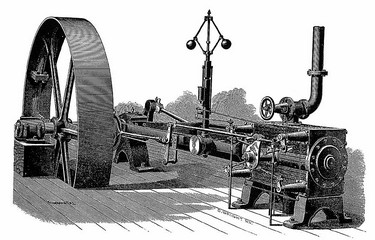 |
|
Fig. 1. Steam Engine (Malone 2005) |
More than a hundred years later, in May of 1966, Stephen A. Coons, a MIT mechanical engineer and early promoter of numerically controlled machinery as creative aides, described digital fabrication devices to an audience of artists and designers as “perfect slaves” that are to perform the dirty work of dealing with materials while the artist or designer is free to “concentrate fully in the creative act” (Coons 1966:11, emphasis added).
These two propositions belong to different moments in history and describe different technological realities; Walker’s was the world of textile mills, factories and steam engines; his Defense of Mechanical Philosophy is an ode to the promises of a nascent technological society. In contrast, Coons’ world is Post-war US America, a world in which computers and other technologies developed mainly for military purposes were starting to be massively, optimistically assimilated by consumer markets in the United States. In his talk he speaks of digital computers and numerically controlled devices ambiguously as “compliant partners”, as an “appropriate kind of slaves” and as “magic instruments of creative liberation”; Coons’ talk is an ode to the promises of the information society, the number-crunching digital computers and their potential for faster, better and cheaper manufacturing. Despite the differences, the ideology both seem to promote is surprisingly consistent: Walker believes, as well as Coons, that the manipulation of physical materials is a stage that should be hidden as an unnecessary and undesired part of human existence. They both dismiss the physical, the material, as something dirty and abject, while the purely mental is ennobled: A working hypothesis of this paper is that a common trait underlies Walker’s and Coons’ discourses.
We maintain, that the more work we can compel inert matter to do for us, the better will be for our minds, because the more time shall we have to attend to them. (…) A certain portion of labor, then, must be performed expressly for the support of our bodies. But at the same time, as we have a higher and nobler nature, which must also be cared for, the necessary labor spent upon our bodies should be as much abridged as possible, in order to give us leisure for the concerns of this better nature. [Walker 1831:124, emphasis added].
This “higher and noble nature” that Walker refers to in his Defense of Mechanical Philosophy is consistent with what - more than a century later - Coons’ refers to when he utters the word “creativity”; we could describe Coons’ definition of creativity as the process of or the ability to operate in a clean and unconstrained world of ideas and symbols. The correspondence between the thoughts of these two men1 perhaps sheds light into the culture and assumptions that underlie the digital tools that we use for designing today (Fig. 2). Walker’s references to the nobility of intellectual contemplation, and Coons’ view of CAD/CAM as a “perfect slave” 2, seem to be instances of the same primal separation in western thought between the physical and the mental, the mind and the body and – perhaps more important for us architects and designers - design from construction.
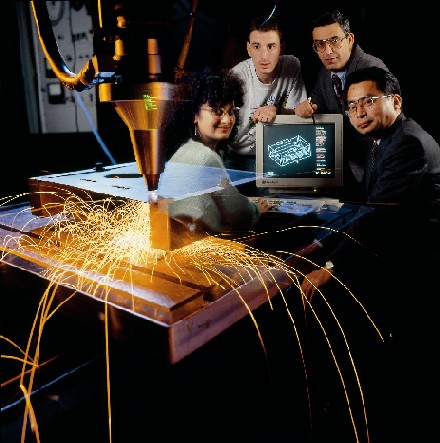 |
|
Fig. 2. A portrayal of early fabrication optimism at (Technion, exact date unknown) |
Part of the significance of Coons’ speech for our understanding of current design culture resides in that it marks the moment when simulation technologies and computer controlled machinery, used during the war to outsmart enemies overseas, started to be conceived in a crucially different way as magic instruments of creative liberation (Coons 1966:11). Once these resemblances between Coons’ early computer-age claims on design and creativity and the hopes of nineteenth century emerging industrial order are exposed, three relevant issues emerge. First, the fact that the portrayal of these environments built on an utopian desire for depriving design of its physicality by having machines enable a – presumably - seamless transit of symbolic forms into matter through machinery3, second, the role of design technologies as active shapers of the cultural notion of creativity and design, and third, the inference that the persistent idea of the perfect slave in Coons’ and Walker’s discourses might be the indication of a long standing trait in design and architectural thought of dividing design and construction. In the next section I will follow on this inference to propose a preliminary draught of a genealogy of the design/construction divide.
An old trait
In his Ten Books of Architecture Renaissance architect and scholar Alberti> established the distinction between lineamenta and structura. This distinction became a powerful dialectic device, and anticipated the future of architect’s relation to construction. Although there is no full agreement in what Alberti> precisely meant by lineamenta, his writings give clues about it being very close to the sphere of representation, and more specifically to the building’s ground plan, where the architect embeds all of his knowledge and judgment. In words of (Lang 1965) “The lineamenta derives from the mind, and the structura from nature”. For Alberti lineamenta means design; a domain in which “all the ideas of the architect are incorporated”. In Alberti>’s vision the ma¬terialization of the architect’s design, its structura, should be performed by a skilled craftsman: in Alberti’s vision there is a clear divide between the ‘organizational’ sphere –the sphere of the architect’s reasoning-, and a physical sphere –conventionally associated with the engineer- that has persisted until today.
The dichotomy between the mental (design) and the physical (construction) is not a consequence of Coons’ computer, or Walker’s mill. Cultural practices, economic interests and human obsessions are crystallized and embodied in design technologies, rather than being originated by them. The analogies that we have traced between the computerized slave of Coons, Walker’s mechanical utopia and the “skilled craftsman” of Alberti> should cast a shadow of doubt on the technological determinism that sometimes seems to underlie digital design discourse, by exposing its nature as a re-interpretation of long-standing desires and obsessions.
Alberti’s role as a Renaissance scholar and architect is an early precedent –yet distinct- of the “gentleman architect” that according to historian of construction Jacques Heyman would appear later in England during the second half of the seventeenth century. Hence Alberti’s distinction must be read keeping in mind that at his time the modern social role of the architect did not exist as we understand it today. The roles of the master builder and of the architect would become definitely separate at a later moment in history. Heyman locates this professional split in the figure of Christopher Wren, a professor of astronomy in seventeenth century England who “had never worked on a building site” but that faced the challenge of efficiently managing the reconstruction of many buildings in London after the great fire of 1666 4 . Because of the scale and number of the works commissioned, Wren’s architectural practice was forced to deal with the construction in a way that differed from the medieval practice of the masons. Taking physical and organizational distance from the medieval master builder, Wren avoided the direct manipulation of materials by using contractors. This marked the emergence of new social roles, new models of authorship, and new economic schemes in construction, giving origin –as is argued by this author- to the modern architect, characterized by its social role of mediator between the client and the builder (Heyman 2003).
Architecture treatises would play a major role in the consolidation of the modern architect by rationalizing practices that had been the sole domain of the craftsmen; in The Projective Cast: Architecture and its three Geometries, Robin Evans discusses how XVIII century French treatises of stereotomy played a major role in the process of rationalization of technique that derived in the specialization of the technical and intellectual roles in construction; Evans discusses how this process was often a source of tensions between the different social groups involved (Fig. 3). (Evans 2000)
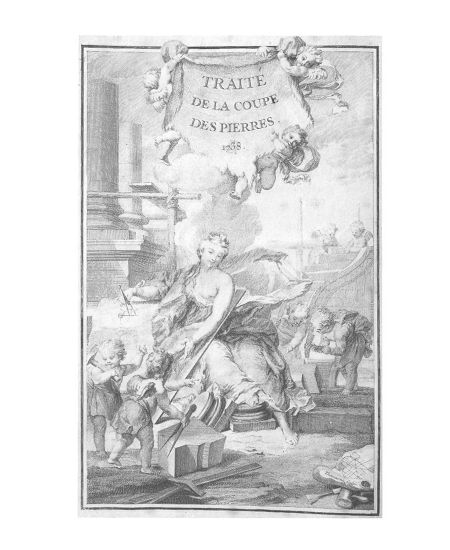 |
|
Fig. 3. A XVII c. treatise on stonecutting, from (Evans 2000) |
Not exclusive to architecture, the division between design and construc¬tion resonates with a more general division between the mental and the material, and is described by many authors as a defining feature of modern western thought and society. Tim Ingold has suggested that this dichotomy is so engrained in our culture that “we are inclined to use it as a window through which to view practices of all kinds, past and present, Western and non-Western, human and animal” (Ingold 2001). Other authors, like (Helmreich 1998) have noted both the platonic undertone of this division, and its resemblance to the Cartesian dualism between mind and body.
Having exposed a preliminary – and somehow arbitrary - draft of a genealogy of the design/construction divide in architecture, I will discuss in the following section how this trait is visible in a few instances of today’s culture of digital design, often in assumptions that go unnoticed in the language we use to talk about our practice as designers.
Scaffolds and Shields
In a session of a graduate research workshop on digital design and fabrication conducted at MIT’s Department of Architecture in the Spring of 2007, one of the staff members put forward a view of the role of computers and machinery in design in terms strikingly similar to those of the examples discussed above.
The visual, the surface, is most of what architectural training is about; that’s what the architects are really good at (…) the other part [the “physical Layer”] is in the back, and that’s what we really want to automate, and that’s what most of computing is about. This is how the system becomes a scaffold for truly creative work.
The concept of creativity in this proposition stops at the visual, and is implicitly linked to the “soft” and “human”. The role of construction, in contrast, falls outside the sphere of the creative, and is linked to the “hard” and automatable. Its role as a “scaffold” for creativity renders it passive rather than active participant in the generation of designs. Computation is conceived as a shield to protect the designer from these contingencies. As a result, materials become in this proposition mere receptacles of ideal forms. Particularly worthy of discussion in this model is the opposition between a “visual layer” to which “design” and “creativity” are confined and a “physical layer” that is the domain of computers and machinery. In this distinction the visual is associated to the intuitive, the imaginative and the creative, and the physical to the objective, functional and “technical”.
As in Walker’s and Coons’ propositions, the physical is to be hidden and out of the sight of the designer in the hands of the perfect slave. This persistent rhetoric places materials and technical knowledge outside the sphere of design and creativity; in words of Bromell, “empties the mechanic’s physical labor of value so that it may be replaced, with no loss, by the efficiencies of mechanism.” (Bromell 43); it is significant that the same rhetoric manifests itself once and again, always rendering design as an exclusively mental activity.
A general examination of current trends in digital design culture both in academia and in practice will expose - with exceptions - a strive of designers to impose the fluid geometry of forms created in 3D-environments into the less forgiving world of materials and gravity. This can be seen in the increasing number of practices that place themselves as bridges between the complexity of digitally generated shapes and the reality of materials. While I worked on sections of this document Fabian Scheurer, a German architect and com¬puter scientist, gave a lecture to the Design and Computation Group at MIT’s School of Architecture. Designtoproduction, his practice, is defined by him as “a consultancy for the digital production of complex designs”, further more, he described his team as integrating “specialist knowledge from various fields to help architects, designers, engineers, and manufacturers bridge the gap between idea and realization” (emphasis added)5. A few weeks later Paul Seletsky gave a lecture on the same room, to the same audience, in which he presented an agenda for a methodological integration of performance data in the early stages of conceptual design, a sort of “consortium” project involving schools and software development teams such as Gehry Technologies. The project in¬volves finding a pre-rational and performance based approach to digital design; his argu¬ment drew largely on the convenience of blurring the line between analysis systems (Ecotect), and design systems (Digital Project, Rhino).
In this section I have discussed some instances of how the design and construction divide is visible in current digital design culture. Even though many times the software’s “signature” becomes a strong driver of the design process this fact goes unnoticed under the illusion of a presumed free-form design. This in turn derives in a displacement of authorship and in an emergence of new social roles. What question do these changes pose for architectural education?
Can we speak of the graphic mannerisms of screen-based design practices as a new canon, comparable to the classic canon of French beaux-artism that Le-Duc would deem empty of meaning? (Le-Duc 1990) Can we devise new premises for compu¬tational design systems? Premises in which perhaps a dynamic dialogue between materials and form is a defining feature of our aesthetic judgments on architecture and therefore of our definition of “design”?
As a final two scenarios for reflection and action ought to be mentioned: 1) GenerativeFabrication: the search for an integrated computational framework for both generative design exploration and prototype fabrication. The role of bottom-up design generation is in this context considered in addition to, and as an alternative to, top-down design methodologies where computer programs or manual labor are used to subdivide an initial shape into a set of distinct building components. This framework would enable exploration of the potential of material and device-specific design grammars to act both as machine-readable information and as platforms for creative design exploration (Cardoso 2008). 2) Objects to Design With; a pedagogical perspective that aims at exposing the logic behind design technologies by enabling students to script their own design tools and to alter existing ones. The international series of workshops Computational Design Solutions, taught in collaboration with Kenfield Griffith, Pablo Herrera and John Snavely are a step towards building this empowerment in young students of architecture.
|
a) |
b) |
c) |
Fig.4(a-c). Exploring Generative Fabrication (by the author)
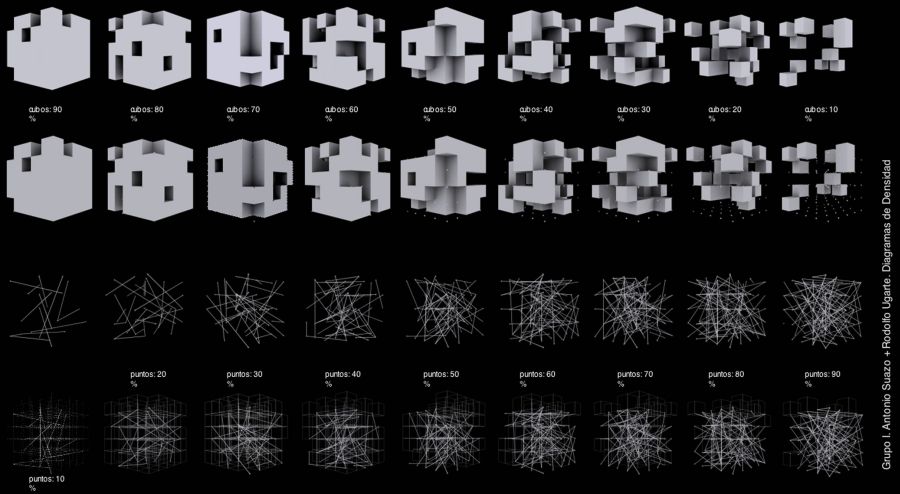 |
|
Fig. 5. Students’ work at the CDS Chile guided by the author |
Conclusion
A persistent view of machinery as a “perfect kind of slave”, and its relevance to digital design discourse, is exposed and discussed critically in terms of the separation of design from construction it elicits. An examination of the genealogy of this cultural trait reveals that rather than originating it, the popularization of computers has redefined it and embodied it in entirely new ways as Computer Aided Design and Manufacturing tools (CAD/CAM). Inadvertently abiding to this separation fixes the place that materials and construction knowledge occupy in a design process, purporting a view of design representations as clean conduits, and of construction materials as passive receptacles of ideal forms.
If we as architects, researchers, authors and educators are to adopt an active, informed, and critical stance towards the tools and environments where design takes place today, the nature of these as cultural objects needs to be debated and examined. Their underlying rules and technicalities open and exposed. Design tools, and particularly computing, are not neutral and embody a discourse that has cultural, political and social dimensions.
Foot-notes
1. As Staudenmaier notes, women’s perspectives on technology are likely to be quite different from men’s (Rothschild 1983).
2. Coons’ enthusiasm for computers and machinery is not an isolated manifestation of technological faith in his time; it is part of a generalized optimism about technological progress that emerged in US American society after the second world war, enthusiasm which, as Paul N. Edwards suggests, can be situated in terms of the realization of a dream of a closed and clean world of purely symbolic manipulation. For an immersion in the role of technology and computing in the construction of post-war American “closed world discourse”, see (Edwards 1996).
3. The phrase Automated Utopia is used in (Marx 2000:185)
4. According to Heyman, rather than the traditional process of apprentice¬ship, Wren’s knowledge of architecture had been acquired by a one year stay in Paris where he observed salient buildings and monuments, and through books (he significantly mentions a 1512 latin edition of Alberti’s Ten books of Architecture).
5. FOC (Freedom of Creation) is a product design firm that defines its practice in the same terms.
Marx, Leo
2000 The Machine in the Garden: Technology and the Pastoral Ideal in America. Oxford University Press.
Malone, Patrick M.
Surplus Water, Hybrid Power Systems, and Industrial Expansion in Lowell, IA, The Journal of the Society for Industrial Archeology NA 2005 <http://www.historycooperative.org/journals/sia/31.1/malone.html> (23 Mar. 2008).
Walker, Timothy
1831 Defence of Mechanical Philosophy, North American Review. 33:1 (1831)
Coons, Stephen
1966 Computer, Art & Architecture. Art Education, Vol. 19, No.5 (May,1966), 9-11
Rothschild, Joan
1983 Machina Ex Dea: Feminist Perspectives on Technology. Teacher’s College Press.
Loukissas, Yanni N.d. The cultural history of the digital fabrication studio. Unpublished, Department of Architecture, Massachusetts Institute of Technology.
Edwards, Paul N.
1996 The closed world: computers and the politics of discourse in Cold War America. Cambridge, MA: MIT Press.
Technion Institute of Technology
[Exact Date Unknown] ComputerAidedManufacturing. Electronic Document.
http://pard.technion.ac.il/archives/Researchers/ComputerAidedManufacturing.jpg
Alberti, Leon Battista
1988 On the Art of Building in Ten Books. Trans. Joseph Rykwert with Neil Leach and Robert Tavernor. Cambridge: MIT Press.
Lang, S
1965 De Lineamentis: L. B. Alberti’s Use of a Technical Term. S. Lang. Journal of the Warburg and Courtauld Institutes, Vol. 28. (1965), pp. 331-335. Stable URL: http://links.jstor.org/sici?sici=00754390%281965%2928%3C331%3ADLLBAU%3E2.0.CO%3B2-Q
Heyman, Jacques
2003 Wren, Hooke and partners. Paper presented at the First International Congress on Construction History, Madrid, 2003.
Evans, Robin
2000 The Projective Cast: Architecture and its Three Geometries. Cambridge: MIT Press.
Ingold, Tim
2001 Beyond Art and Technology: The Anthropology of Skill. In Anthropological Per¬spectives on Technology. Michael Brian Schiffer, ed. Pp. 17-31. Amerind Foundation Publication.
Helmreich, Stefan
1998 Silicon Second Nature. Berkeley and Los Angeles CA: University of California Press.
Bromell, Nicholas Knowles
1993 By the Sweat of the Brow: Literature and Labor in Antebellum America. University of Chicago Press.
Le-Duc, Viollet
1990 The Architectural Theory of Viollet-le-Duc: Readings and Commentaries (Paperback). Hearn, M.F. ed. Cambridge: MIT Press.
Cardoso, Daniel
2008. Generative Fabrication. Unpublished, Department of Architecture, Massachusetts Institute of Technology.
Herrera, Pablo
2008 Arquitectura y Programacion
http://arquitecturayprogramacion.blogspot.com/2008/02/rhinoscripting-workshop-lima-20
Fig. 1. Steam Engine: Patrick M. Malone, "Surplus Water, Hybrid Power Systems, and Industrial Expansion in Lowell," IA, The Journal of the Society for Industrial Archeology NA 2005 <http://www.historycooperative.org/journals/sia/31.1/malone.html> (23 Mar. 2008).
Fig. 2. http://pard.technion.ac.il/archives/Researchers/ComputerAidedManufacturing.jpg
Fig. 3. Evans, Robin, 2000 The Projective Cast: Architecture and its Three Geometries. Cambridge: MIT Press.
Fig. 4(a-c). Generative Fabrication Experiments By the author
Fig. 5. Work of students Rodolfo Ugarte and Antonio Suazo, directed by the author at the Santiago 2006 CDS Workshop















